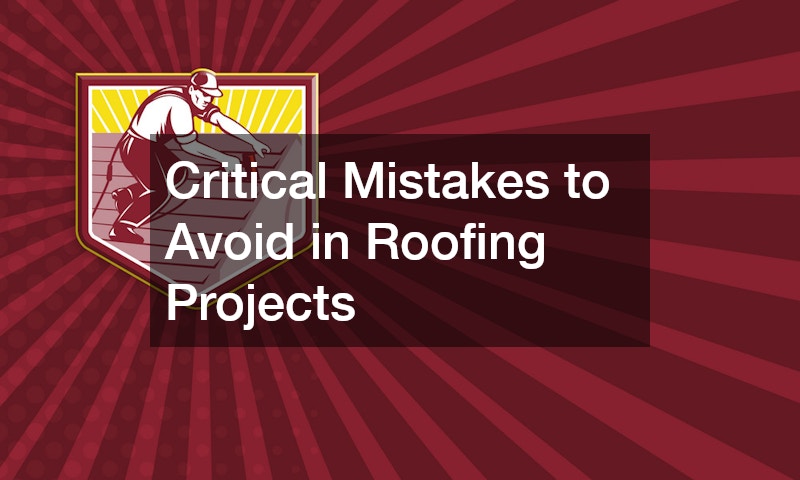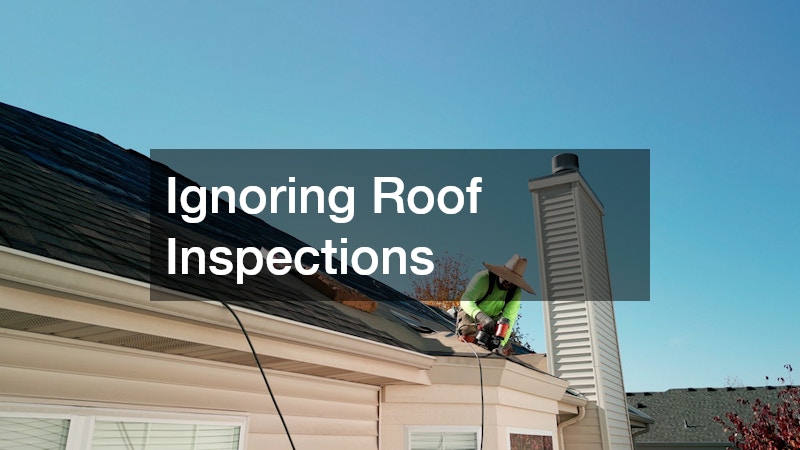
Critical Mistakes to Avoid in Roofing Projects
When it comes to your home or building, the roof plays a vital role in protecting the structure, preserving energy efficiency, and ensuring long-term value. But whether you’re installing a new roof or replacing an old one, it’s easy to make costly mistakes—especially without the right guidance. Working with experienced roofers can help, but it’s equally important to be aware of common pitfalls. In this article, we’ll cover ten major things to avoid in any roofing project to ensure durability, performance, and peace of mind.
1. Ignoring Roof Inspections
One of the most overlooked steps in roofing is failing to perform a proper inspection before beginning the project. This includes assessing the decking, flashing, and any signs of water damage beneath the old shingles. Skipping this step can lead to hidden problems being sealed in, only to cause leaks or structural issues later.
2. Using Incorrect Materials for the Climate
Every region has its own set of weather conditions, and not all roofing materials are suitable for every environment. Choosing the wrong type—whether it’s a material that can’t handle heat, snow, or heavy rainfall—can reduce the lifespan of the roof and lead to frequent repairs. Trusted roofers will always recommend materials best suited to the local climate.
3. Poor Ventilation Planning
A roof doesn’t just protect from outside elements; it also plays a role in regulating temperature and moisture in the attic. Improper ventilation can lead to heat buildup, mold growth, and ice damming during winter. Make sure your roofing system includes proper intake and exhaust vents to maintain airflow.
4. Overlooking Flashing Details
Flashing—the thin pieces of metal installed around chimneys, vents, and other roof penetrations—is critical for preventing water leaks. Using old flashing or failing to install it properly can allow water to seep into vulnerable areas. Always ensure flashing is installed new and sealed correctly.
5. Re-Roofing Over Damaged Shingles
It might seem like a shortcut to install new shingles over the old ones, but this method only masks problems. It adds weight, creates uneven surfaces, and can hide soft spots in the decking. A clean tear-off allows for a full inspection and ensures the new roof performs as expected.
6. Improper Installation of Underlayment
The underlayment is a waterproof barrier installed beneath shingles. If it’s not installed correctly—especially in valleys, edges, and eaves—it leaves the roof vulnerable to leaks. This layer is often the last line of defense against wind-driven rain, so it must be properly laid and sealed.
7. Choosing Appearance Over Function
It’s natural to want a roof that looks great, but aesthetics should never outweigh functionality. Some materials may look attractive but lack the durability or performance needed for your property. Focus on trusted materials and designs that provide both beauty and protection.
8. Failing to Account for Drainage
Water drainage is a critical part of roofing. If the slope of the roof or the placement of gutters and downspouts is poorly planned, water can pool or run off in ways that damage siding, landscaping, or the foundation. Ensure the roof design promotes efficient water flow away from the structure.
9. Hiring Inexperienced Roofers
The skill and experience of the roofing contractor are just as important as the materials used. Unqualified roofers may skip important steps, rush the job, or overlook critical issues. Always check credentials, references, and previous work before hiring. A well-qualified team ensures the job is done safely and correctly.
10. Skipping Permits and Building Codes
Every region has specific building codes and permitting requirements, and failing to follow them can result in fines or issues when selling the home. Even more seriously, ignoring code requirements may lead to an unsafe roof structure. A licensed roofing contractor will handle this process and ensure all regulations are met.
Even the most durable roofs need some maintenance. Neglecting this can shorten the life of your roofing system. Plan for annual inspections, gutter cleanings, and minor repairs to keep the roof in excellent condition year-round.
A roof is one of the most important structural elements of any home or commercial building. Avoiding these common mistakes—whether it’s ignoring inspections, cutting corners on ventilation, or hiring inexperienced roofers—can save years of headaches and extend the life of your investment. Every decision you make during the roofing process should be focused on safety, performance, and long-term durability. When in doubt, consult a reputable roofing professional who can guide you every step of the way.


